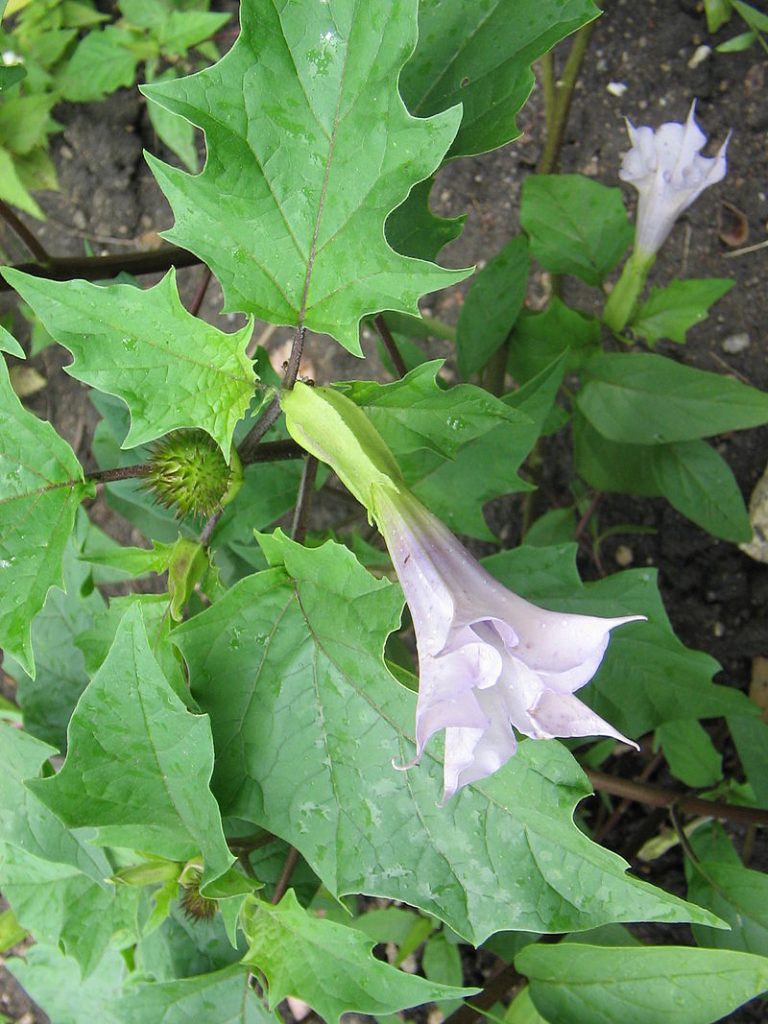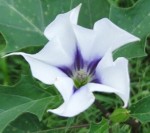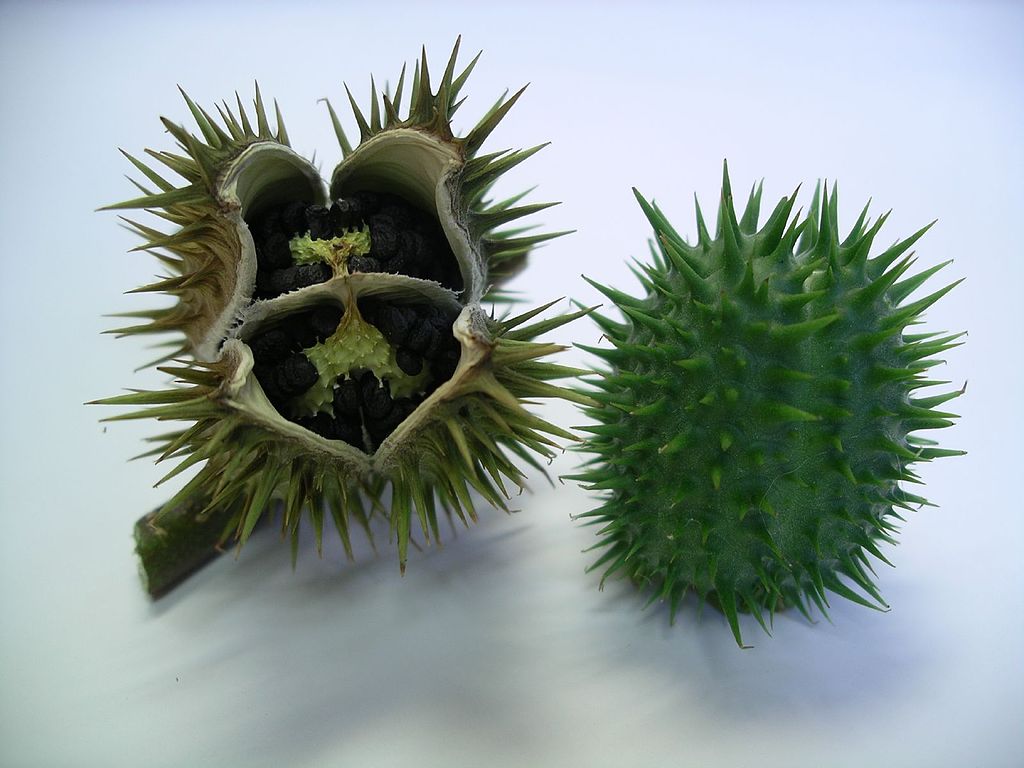
The origin of jimsonweed is unclear; it may have come from tropical Asia or America but is now found throughout the world including most of the United States. It is a member of the nightshade family, Solanaceae, that also includes potato, tomato, eggplant, and peppers. Jimsonweed prefers sun to partial sun and moist to mesic, fertile soil high in nitrogen. It is a familiar plant in manure piles, stockyards, and feedlots but grows well in cornfield, pastures, abandon fields, waste areas, vacant lots, and other places where the soil has been disturbed. Also known as locoweed, thornapple, green dragon, and mad apple, the plant has long been used in herbal medicine and misused by individuals wishing to enjoy its hallucinatory properties. Unfortunately, jimsonweed can be very dangerous, and misuse can result in hospitalization and death. The common name of this annual summer weed may be a corruption of “Jamestown Weed”, referring the site where the plant was first identified in North America during the 17th century.

 Description: Jimsonweed is a large robust plant growing up to five feet tall. Its stem is erect, freely branching and either green or purple. The alternate leaves are 8” long and 6” wide and pinnately lobed with 2-3 lobes on each side of the leaf, sometimes with secondary lobes and coarse teeth. The upperside of the leaf is darker green than the lowerside and young leaves may be slightly hairy. When crushed the leaves give off a foul odor. White to purple, funnel-shaped flowers appear in the leaf and branch axils throughout the summer and are 5” long and 2” across. Flowers usually open at night when their fragrance attracts nocturnal moths, and close by noon. A single flower lasts less than a day and is replaced by a spiny fruit the size of a walnut, bearing numerous large kidney-shaped seeds that can remain viable in the soil for years. The root system is thick and highly branched. Photo Credit Skapperod Wikimedia Commons
Description: Jimsonweed is a large robust plant growing up to five feet tall. Its stem is erect, freely branching and either green or purple. The alternate leaves are 8” long and 6” wide and pinnately lobed with 2-3 lobes on each side of the leaf, sometimes with secondary lobes and coarse teeth. The upperside of the leaf is darker green than the lowerside and young leaves may be slightly hairy. When crushed the leaves give off a foul odor. White to purple, funnel-shaped flowers appear in the leaf and branch axils throughout the summer and are 5” long and 2” across. Flowers usually open at night when their fragrance attracts nocturnal moths, and close by noon. A single flower lasts less than a day and is replaced by a spiny fruit the size of a walnut, bearing numerous large kidney-shaped seeds that can remain viable in the soil for years. The root system is thick and highly branched. Photo Credit Skapperod Wikimedia Commons

 Control: Since jimson is an annual and reproduces by seed and then dies control methods should aim at removing the plants before flowering and setting seed. Seeds remain viable in the soil for several years so any plant that produces seed may create future problems for years. Individual plants can be cut down with a hoe or clippers with the cut just below or at the soil line. For severe infestations preemergent and/or postemergent herbicides may be necessary. Photo Credit Corin-Royal-Drummond-Wikimedia-Commons
Control: Since jimson is an annual and reproduces by seed and then dies control methods should aim at removing the plants before flowering and setting seed. Seeds remain viable in the soil for several years so any plant that produces seed may create future problems for years. Individual plants can be cut down with a hoe or clippers with the cut just below or at the soil line. For severe infestations preemergent and/or postemergent herbicides may be necessary. Photo Credit Corin-Royal-Drummond-Wikimedia-Commons
